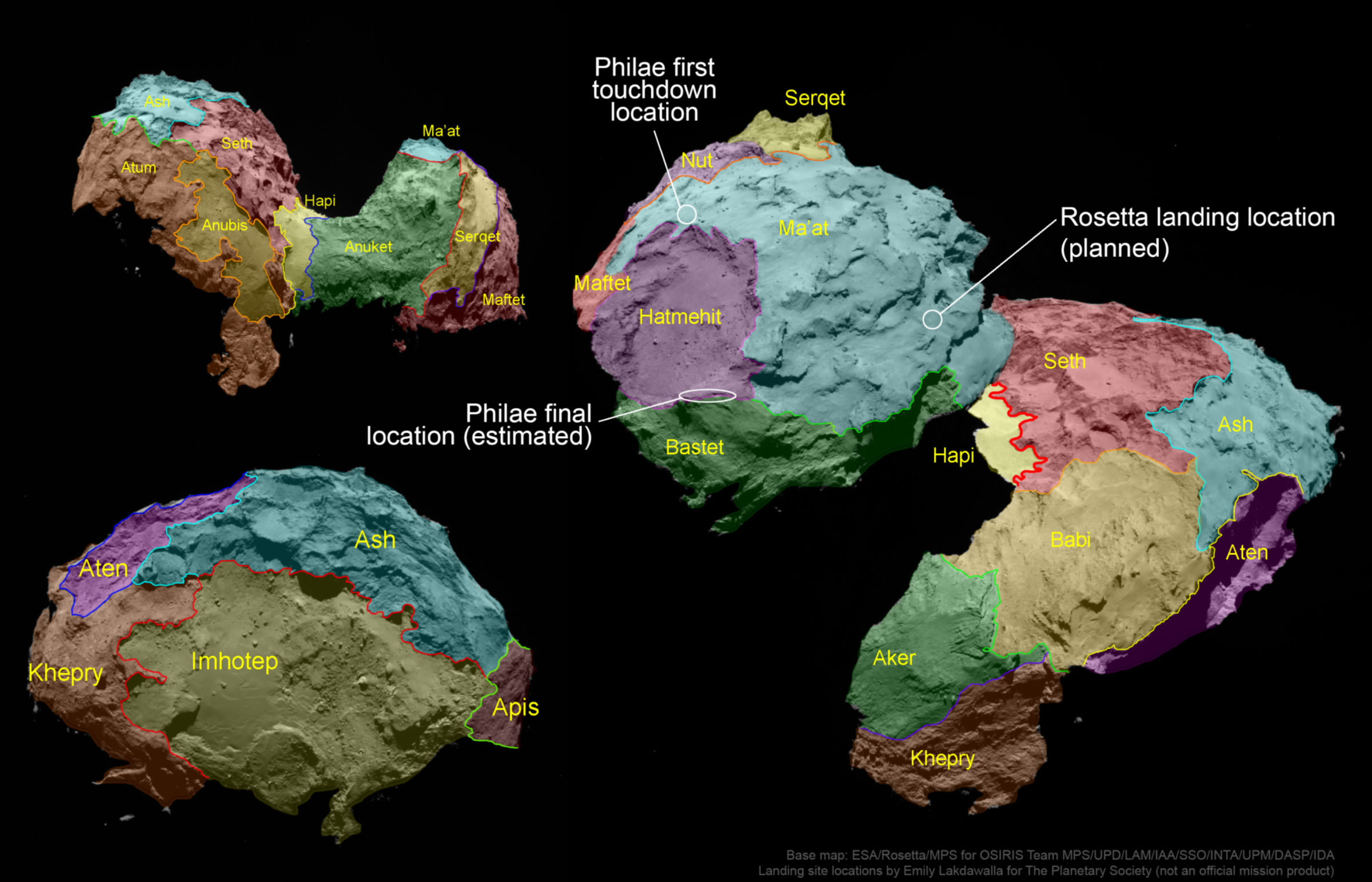Emily Lakdawalla • Jul 26, 2016
Rosetta end-of-mission plans: Landing site, time selected
ESA's comet-chasing Rosetta spacecraft is nearing the end of its mission. The spacecraft depends on the Sun for power, and had energy to spare when the comet was at perihelion (of about 1.24 AU) on August 13. But the comet has spent the last year rapidly receding from the Sun: it's already nearly at 3.5 AU, beyond the main asteroid belt. So Rosetta's power is declining, with the Sun already 8 times less strong than it was at perihelion. Rosetta survived to great distance from the Sun earlier in its mission only by entering a deep hibernation. ESA isn't going to try that hibernation feat again, and is instead planning to end the mission with a slow spiral into the comet and a controlled impact on September 30.
Last week, ESA announced when and where Rosetta is going to touch down, bringing the mission to an end: within the Ma'at region on the comet's head, at approximately 10:30 UTC (12:30 CEST / 06:30 EDT / 03:30 PDT) on September 30. It took me a while to figure out its position relative to the Philae landing locations -- comet geography is challenging! -- but I think this is how they all relate to each other:

Rosetta's increasing distance from the Sun means that it no longer has enough power to run all of its subsystems, and the mission has begun to turn off nonessential ones. That has brought Rosetta to a symbolic and sad moment: tomorrow at 09:00 UTC, they will shut down the Electrical Support System Processor Unit, a piece of equipment that is nonessential because it used to be used to communicate with the now-silent Philae. We knew already that Philae would likely never be heard from again after its last contact in July 2015, but the shutdown of this piece of equipment makes that absolutely final.
It's sad to say goodbye to Philae; it'll be much sadder to say goodbye to the scientifically productive mothership, Rosetta. But the final phase of the mission will be thrilling as it brings us ever-closer views of the comet!

Support our core enterprises
Your support powers our mission to explore worlds, find life, and defend Earth. You make all the difference when you make a gift. Give today!
Donate

 Explore Worlds
Explore Worlds Find Life
Find Life Defend Earth
Defend Earth

